SIM Gdynia recognized by Forbes again – ranked among the best family businesses in Pomerania for the second time in a row

We are proud to announce that SIM Gdynia has been recognized for the second time in a row in the prestigious Forbes 2025 Family Business Forum ranking. Our company was among the recognized family businesses in the Pomeranian Province in the category of revenues up to PLN 100 million. This is a special distinction for us, not only because it comes from one of the most renowned business magazines in the world, but above all because it confirms the stable development of SIM Gdynia and our unwavering consistency in the pursuit of excellence. What this distinction means The Forbes Family Business Forum ranking distinguishes companies that combine modern management with family values – trust, responsibility, and long-term thinking. For us at SIM Gdynia, this is special proof that the direction we have taken is the right one. The fact that we have been among the distinguished companies for the second time in a row confirms that our actions bring lasting results and that the way we combine tradition with technology is recognized and appreciated on the market. For over 45 years, we have been consistently investing in modern CNC machining technologies, the development of engineering teams, and the improvement of production processes. Every detail that leaves our plant is the result of the cooperation of people for whom precision is not only a technical requirement, but part of our company’s DNA. Family tradition meets Industry 4.0 The history of SIM Gdynia began in 1978 with a small locksmith’s workshop. Today, we are a modern company serving customers in industries such as: Our strength lies in combining a family character with advanced technology. Thanks to over 100 CNC machines from renowned manufacturers such as Makino and Okuma, we can carry out projects that require the highest precision. Success we build together This distinction would not have been possible without our team of experienced engineers, CNC operators, technologists, and quality specialists. It is also thanks to our customers and partners, who have been entrusting us with their most demanding projects for years. Thank you for your trust and cooperation. It is thanks to you that we can continue to grow, innovate, and maintain the highest production standards. An award that motivates The Forbes 2025 award is not only a source of pride for us – it is also a commitment. At SIM Gdynia, we will continue to invest in: Summary The second consecutive Forbes Family Business Forum title confirms that family character, technological precision, and consistency in action create a solid foundation for success. At SIM Gdynia, we believe that modern CNC machining is not just a technology—it is a philosophy of continuous improvement. We would like to thank Forbes Polska for this distinction and our partners for their continued trust. Together, we are creating the future of precision manufacturing.
CNC machining in prototyping and short-run production for the military

In the defense industry, response time and flexibility are as important as reliability. In a world where military technology is developing rapidly and requirements change from month to month, the traditional mass production model does not always work. This is where CNC prototyping for the military and short–run production play a huge role. CNC machining makes it possible not only to quickly develop prototypes of new components, but also to produce short test series that go directly to the testing ground. In the defense sector, this is not a luxury, but a necessity – because this is the only way to meet the demands of the modern battlefield. The role of CNC prototyping in the defense sector CNC prototyping allows engineers and designers to instantly translate a concept into an actual component. The process is as follows: Design → CAD model → CNC program → physical prototype → testing → revisions. This dynamically shortens the development cycle. In the military, this is crucial. The prototype can be quickly tested under field conditions, corrections can be made, and the prototype can be put into production in a short period of time. It is also worth mentioning the Iterative “Test-Analyze-Fix-Test” approach which is now a standard in the defense industry, and CNC machining makes it possible to implement it effectively. Read more about CNC machining in our article ‘‘What is CNC machining?’’ CNC prototyping support technologies for the military Prototyping is not only about speed, but also precision. The most advanced CNC technologies are used to accomplish such tasks: Thanks to such technologies, military prototypes are not just “preview versions” – they are fully functional components ready for testing. CNC short runs in defense – when are they needed? Short-run production in the military is as important as prototyping itself. It enables rapid implementation of solutions that are in the testing phase or need to be upgraded. Typical applications of CNC short runs in defense: Each batch must meet the same quality standards as mass production, and documentation includes material certificates, process reports and full traceability. Process – from prototype to short run 1. Preparation The 3D design (CAD) is transformed into a CNC program (G/M code), tailored to the specific machine. 2 Prototyping 3 Approval of the pattern The first piece undergoes First Article Inspection (FAI) – a comprehensive dimensional and quality inspection. 4 Short run Production of repetitive parts while maintaining full documentation. Each step is monitored and processes are reported. 5. quality control Sources of restrictive standards in CNC machining for defense The production of defense components differs from the civilian industry primarily in terms of tolerances and quality control. In commercial applications, tolerances of 0.01 mm are acceptable. In the military industry, requirements go as high as ±0.005 mm. The reason is simple: components must perform reliably in extreme conditions – from Arctic frost to desert heat to environments subjected to severe overloading and contact with aggressive chemicals. Therefore, the entire process must comply with international quality standards, such as ISO 9001, AS9100D and AQAP – the NATO quality assurance system. When working with foreign entities, ITAR or DFARS regulations may additionally apply, covering export control and data security. Learn more about CNC machining requirements in the defense and military sectors in our article: ‘‘CNC machining in the defense and military industry – what requirements must a supplier meet?’’. SIM Gdynia – experience in prototyping and short runs At SIM Gdynia, we support the defense and military sectors with precision CNC machining. We have more than 100 modern machines, including 5-axis centers, which allow us to realize both unit prototypes and short series with the highest quality requirements. Our experience includes working with the most demanding materials – titanium, Inconel or hardened steels. We carry out all processes in accordance with international quality standards. What ‘ s more, at SIM Gdynia on July 4, 2025, we obtained a license from the Ministry of Internal Affairs and Administration (No. B-090/2025), which allows us to carry out projects for the defense industry. The process of obtaining it is extremely restrictive and requires meeting standards both in terms of safety and CNC machining itself. Summary CNC prototyping for the military and short CNC series in defense are today the pillars of the army’s technological development. They enable rapid testing, iteration and implementation of new solutions. Restrictive standards, full documentation and the highest precision are necessary – because in the defense sector the margin for error does not exist. At SIM Gdynia, we provide comprehensive support – from prototype to short series – in full compliance with the requirements of the military industry. Feel free to contact us.
News report on the SIM Gdynia production team integration trip
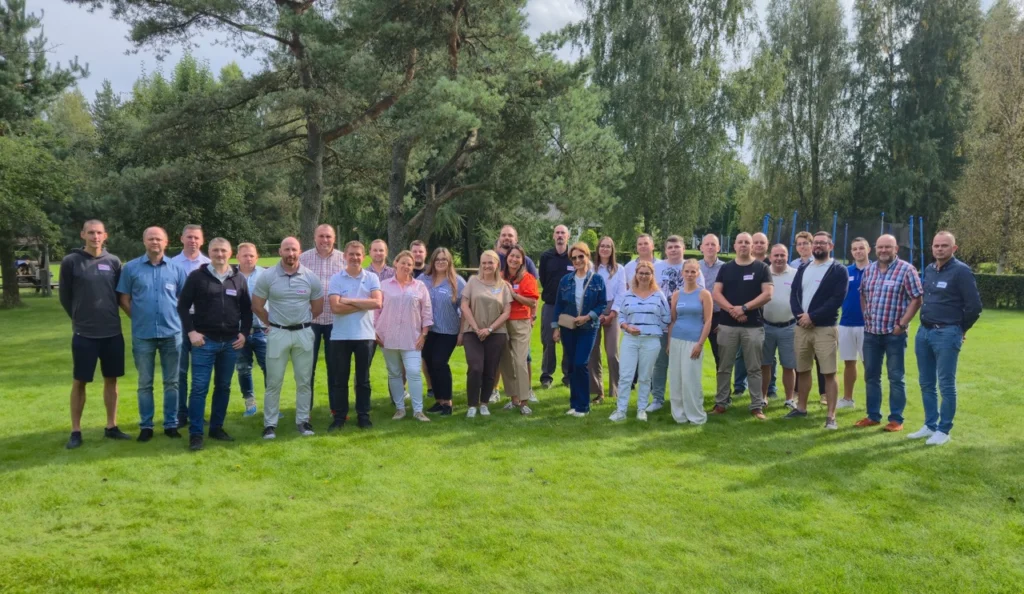
In September, we organized an integration and development trip for teams directly involved in production. It was attended by representatives of the technology department, sales department and foremen. We believe that it is the team that is the foundation of our company. Therefore, working together on improvements and building relationships between departments are of great value to us. The first part was dedicated to integration. Through team games, group tasks and discussions, we were able to build greater mutual understanding and get away from the daily production routine. The second part had a workshop character. The training was led by Piotr Olewniczak from RID. Together we analyzed the challenges we face every day in production. We talked about possible improvements that can realistically affect the efficiency of our processes. Many valuable ideas were raised. Some of them we are already analyzing for implementation. For us, as SIM Gdynia, such meetings are not only a form of integration, but above all an important element of building a company based on cooperation and open communication. We believe that it is through this approach that we can continuously develop and effectively respond to production challenges. The organizational culture that we create together with our team is a real support for us in our daily work and a source of advantage in the market of CNC machining services. Thanks to all participants for their openness and activity!
SIM Gdynia after MSPO 2025 -thank you for the meetings and new perspectives
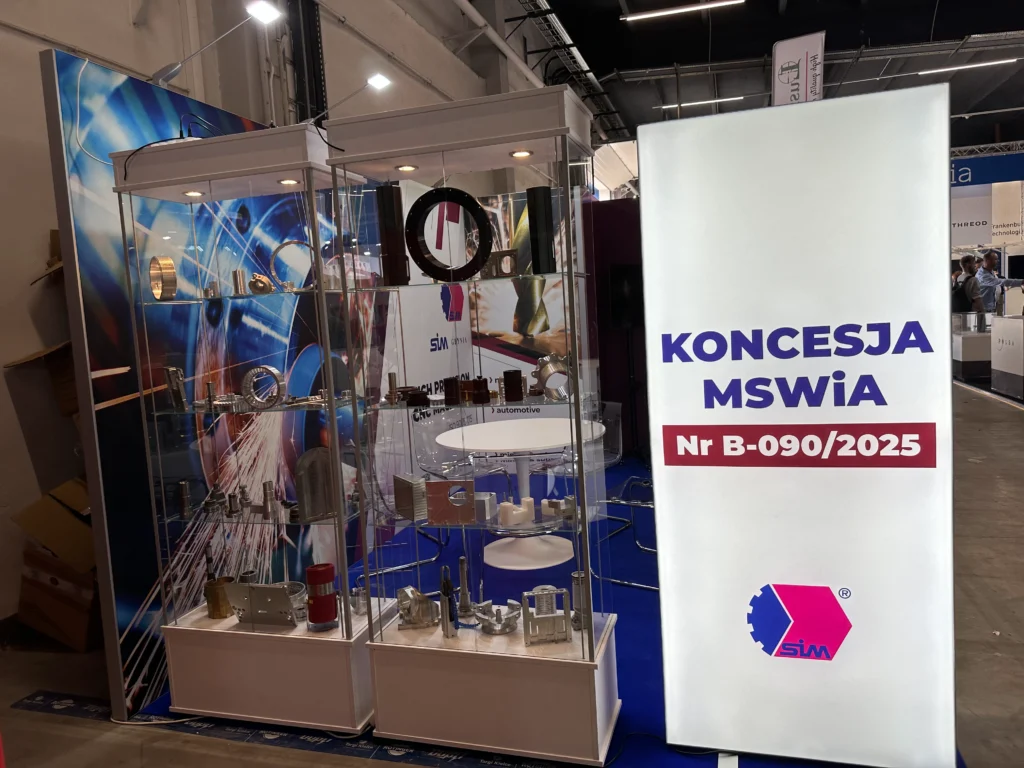
The MSPO 2025 trade fair in Kielce is over! Four days of intensive talks, meetings and presentations have confirmed it as the most important defense industry event in Central and Eastern Europe. As every year, MSPO brought together hundreds of exhibitors and thousands of visitors – representatives of the army, state administration, engineers and decision-makers from the defense industry. Thank you for visiting our booth We would like to thank you for the numerous visits to our booth. Your presence, conversations and interest in our offer confirm that our competence in precision CNC machining is the answer to the real needs of modern defense. This year’s edition was special for us also because for the first time we were able to present ourselves as a company with a new concession for defense projects. This paved the way for new contracts and deepened our development towards serving military entities. MSPO 2025 was not only an opportunity for us to make presentations, but more importantly to build relationships and plan future projects. We are proud to have participated in this prestigious event and are already looking forward to the next edition. We encourage you to check out the photo gallery from the event below!
CNC machining in the defense and military industry – what requirements must a supplier meet?
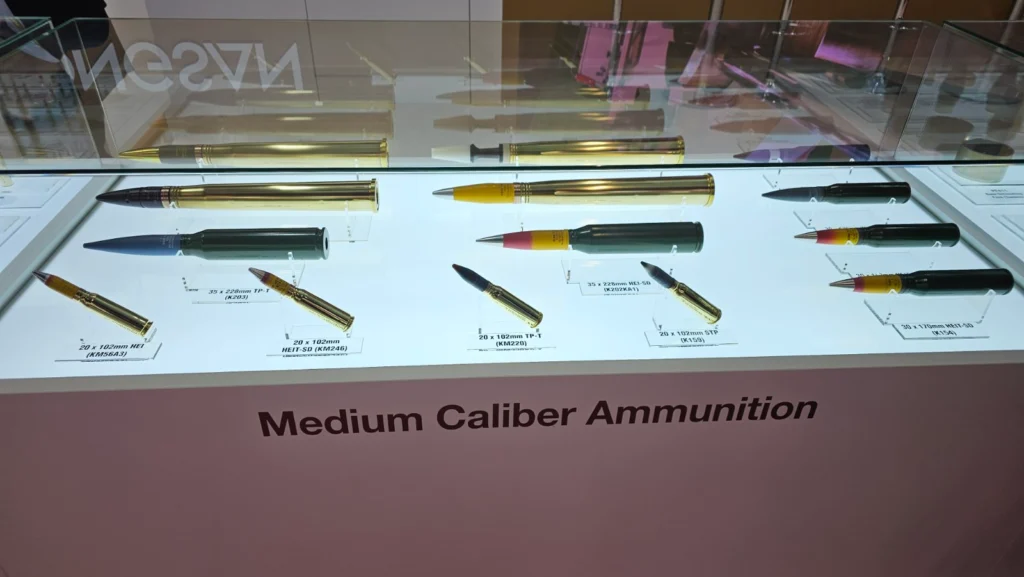
CNC machining in the defense and military industry is an extremely demanding subject. There is no room for compromise in this industry – every component must meet the highest standards of quality, safety and reliability. From optical sights to missile guides to propulsion system components, all these parts are created through CNC technology. Why are the requirements for suppliers so strict? The answer is simple. The safety of soldiers, the effectiveness of defense systems and, more broadly, national security depend on the quality of the components made. So let’s take a step-by-step look at what conditions a supplier must meet in order to operate in this area. The role of CNC machining in the defense and military industries CNC machining in the defense and military industries serves as the foundation for the production of modern weapon systems. It allows components with highly complex geometries to be manufactured while maintaining repeatability and accuracy on the order of micrometers. Examples of parts produced by this method: Compared to other industries, the defense industry is characterized by a much higher level of requirements – both technical and formal. While in automotive applications tolerances of 0.01 mm are often sufficient, in the case of military technology we are talking about as much as ±0.005 mm and the need to maintain them in every piece. Read more about CNC machining in our article ‘‘What is CNC machining?’’. Technical requirements for suppliers of CNC mechanical components for the military Manufacturing for the military sector requires access to the most advanced machining technologies. Suppliers must demonstrate not only a modern machine park, but also experience in working with difficult materials. Materials used in the military industry: Tolerances and dimensional control: Military components require precision at the micrometer level. In practice, this means that each piece must meet the same criteria, and the production process is continuously monitored using CMMs (Coordinate Measuring Machines). Advanced machining technology: Quality standards and certifications in CNC machining for the military Technology alone is not enough. To operate in the defense industry, a supplier must have the appropriate quality certifications. They are the ones that confirm that manufacturing processes comply with strict international standards. The most commonly required standards are: In practice, this means full production traceability: each batch, and even a single component, must have documentation to prove compliance. SPC (Statistical Process Control) reports are also often used to show process stability over time. MSWiA concession – the key to working with the defense industry In addition to the technical and certification requirements, a supplier operating in Poland must have an appropriate license issued by the Ministry of Internal Affairs and Administration. Without it, there can be no legal production or marketing of military components. Why is the concession so important? At SIM Gdynia, we obtained our MIA license (No. B-090/2025) on July 4, 2025. The process of obtaining it is not a simple one – it is extremely restrictive and requires compliance with a number of rigorous standards, both in terms of safety and production organization, as well as in the CNC machining processes themselves. This includes quality control at every stage, full traceability of parts and the use of advanced technologies in line with the requirements of the defense industry. For more on the subject of our obtaining a license, see our article ‘’SIM Gdynia has obtained a license for the production of weapons and military technology’’. Security and confidentiality in military production Protecting information and procedures is also crucial in the military industry. Design documentation, technical drawings or material data are classified information that must be secured at the highest level. Therefore, suppliers are required to: It is worth noting that today security is not only a matter of physical protection of the plant, but also cyber security. IT systems handling production and documentation must be resistant to hacking attempts and data theft. Summary of requirements for suppliers of CNC components to the military CNC machining in the defense and military industries is an area where technology, precision and formal regulations meet. In order for a supplier to operate in this industry, it must meet stringent requirements – from precision machining of difficult materials, to quality certification, to MSWiA licensing. Such a high level of requirements is no accident. It is what guarantees that the resulting components will be reliable, and that their use in combat conditions will not disappoint soldiers. In this context, restrictiveness is not an obstacle, but a necessity – because in the defense sector the margin for error simply does not exist.
CNC machining of plastics – challenges and material specifics
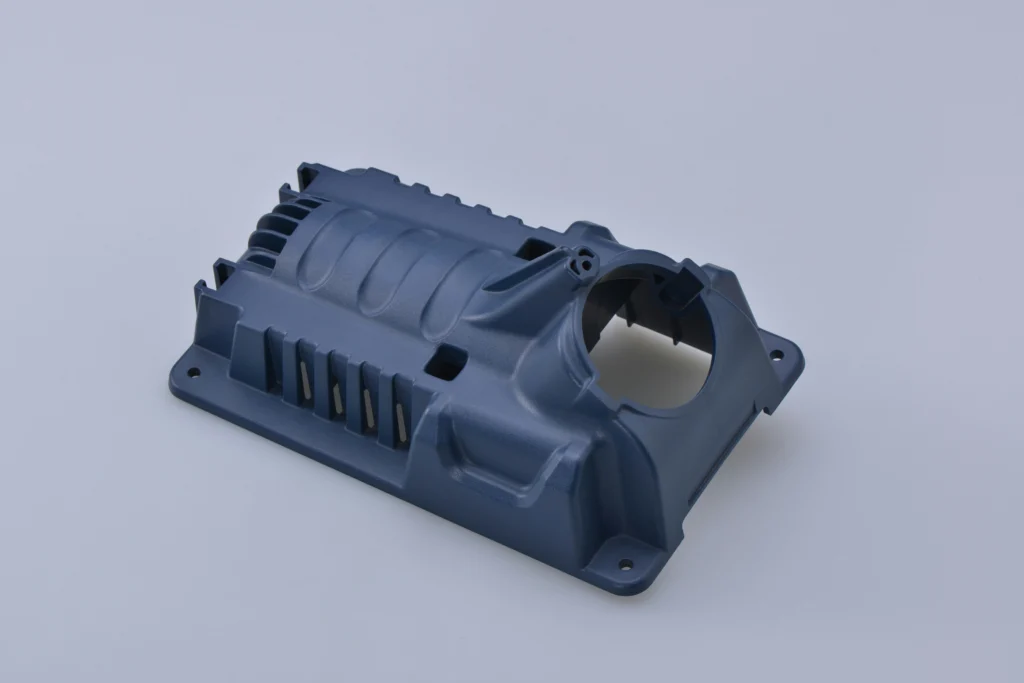
In recent decades, plastics have become a full-fledged construction material in a wide range of industries – from automotive and electronics, to medicine and more. Their growing popularity is due to a combination of low weight, chemical resistance and a wide range of mechanical properties that can be customized for a specific application. At the same time, CNC machining of plastics is significantly different from metal cutting. Polymers have completely different behavior when exposed to heat, moisture and internal stresses. This forces a different approach to design, tool selection and manufacturing strategies. In this article, we’ll take a look at the specifics of CNC machining of plastics – discussing the most common technological challenges, the differences in approach compared to metals, and the key factors that determine the quality and repeatability of production. Why is CNC machining of plastics different from metals? Plastics behave differently than metals in the machining process, mainly because of their physical and structural properties. Three factors play the biggest role here: In summary, for polymers, it is crucial to control temperature, take into account internal stresses and moisture-related dimensional stability. Properties of selected materials in CNC machining of plastics The diversity of plastics makes it difficult to speak of a one-size-fits-all machining method. Each polymer behaves differently under the influence of temperature, moisture or mechanical loads. POM (acetal) – the most predictable technical polymer POM is considered to be the easiest engineering plastic to work with. It is characterized by low moisture absorption, dimensional stability and good surface quality after cutting. Therefore, it is often the first choice for the production of precision mechanical parts requiring dimensional repeatability. PA (nylon) – a material that requires moisture control Nylon is distinguished by its high mechanical strength, but its disadvantage is its strong hygroscopicity. Absorbed water changes not only the dimensions, but also the hardness and elasticity of the material. For this reason, many mills use drying of semi-finished products before machining, as well as stress-relief annealing before cutting. (A heat treatment process that involves heating the material, holding it at a given temperature and slowly cooling it to remove internal stresses) PC (polycarbonate) – strong, but prone to stress cracking Polycarbonate is prized for its exceptional impact resistance. Unfortunately, at the same time it is prone to micro-cracking under internal stresses and in contact with certain coolants and solvents. To reduce the risk, sharp tools, cooling with neutral media and an annealing process at critical parts are used. PMMA (acrylic) – a material for optical applications Acrylic is the material of choice where transparency and high surface aesthetics are required. However, annealing both before and after processing is necessary to achieve dimensional stability. In optical applications, flame or chemical polishing is additionally used to remove microcracks and improve transparency. PTFE (Teflon) – a material flow problem PTFE is a polymer with a very low coefficient of friction and excellent chemical resistance. Its disadvantages are softness and a tendency to so-called creep – that is, slow deformation under load. CNC machining here requires particularly rigid fixtures and sharp tool geometry. PEEK – a high-performance polymer PEEK is one of the most expensive and advanced engineering polymers. It exhibits high thermal and mechanical resistance. Its CNC machining is relatively predictable, provided the material has been annealed beforehand. For glass or carbon fiber reinforced composites, PCD or diamond tools are recommended. Dimensional stability and tolerances in CNC machining of plastics One of the key issues in CNC machining of plastics is the dimensional stability of the parts. It depends not only on the accuracy of the machine tool, but also on the history of the material. In our experience, tolerances of ±0.0005 inches can be achieved under favorable conditions, but only for stable materials (e.g., POM, PEEK) and with proper environmental control. The importance of designing under plastics Designing plastic parts requires a different approach than for metals. Polymers are more susceptible to stress concentration, deformation or closing of holes after machining. Therefore, the properties of the material must be taken into account already at the design stage. In practice, this means, among other things, avoiding sharp internal angles (which initiate cracks), using radii at corners, selecting appropriate wall thicknesses and preferring threaded inserts to threads made directly into the plastic mass. Summary CNC machining of plastics is an area that requires experience and an understanding of material specifics. Unlike metals, where heat and stresses are easier to control, polymers require a customized approach. With knowledge of these relationships, it is possible to achieve high surface quality and stable dimensions, making plastics a full-fledged material in modern industry.
CNC machining of brass – properties, grades and best practices
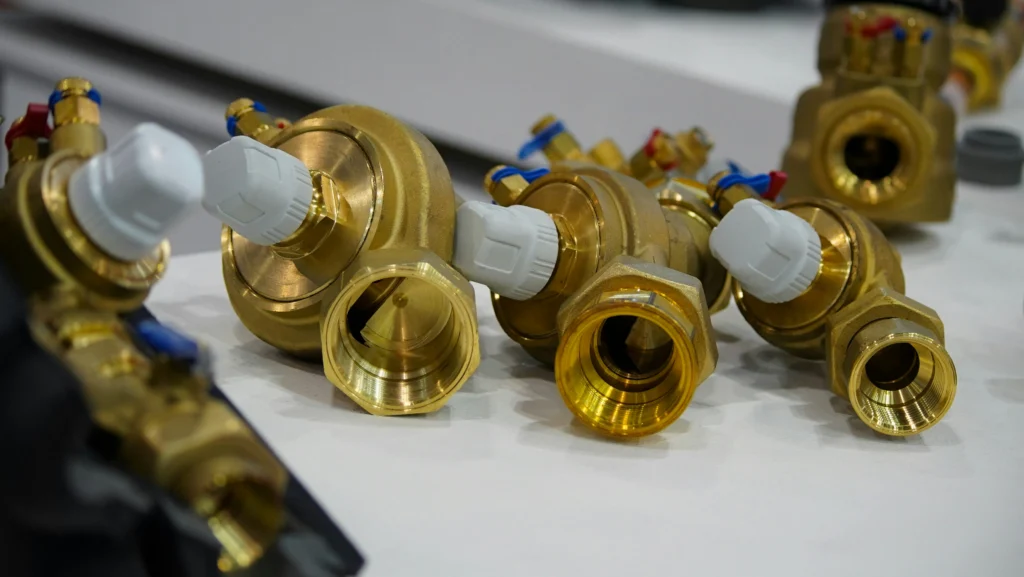
Brass, an alloy of copper and zinc, is one of the most commonly chosen nonferrous metals in CNC machining. It is valued for its ease of machining, corrosion resistance and attractive surface appearance. Thanks to these properties, it is used in fittings, electrical parts, precision components or decorative details. The importance of brass in industrial production is due not only to its functional properties, but also to the economy of the process – in many cases, it makes it possible to achieve high quality parts with relatively short processing times. In this article, we will introduce the properties of brass relevant to CNC machining, discuss the most common grades of this alloy, and suggest, based on our more than 45 years of experience, how to approach turning, milling, drilling or tapping for optimal results. Brass and CNC machining In metal CNC machining, brass stands out from many others. Its thermal conductivity reduces the risk of tool overheating, and its relatively low hardness makes for a smooth process. This makes it possible to use high cutting speeds and achieve very smooth surfaces without additional polishing. It is these features that make CNC turning and milling of brass one of the particularly cost-effective processes. Appropriately selected cutting parameters allow rapid removal of excess material while maintaining high surface quality. The most common grades of brass Several key varieties of brass are encountered in industrial practice: Knowing these differences can help you avoid mistakes and optimize your cutting process. CNC turning and milling of brass – what is worth knowing? Turning brass is one of the basic operations in CNC machining of this alloy. In order for the process to be stable and give high surface quality, it is used: Brass milling is also one of the very efficient processes, provided the right choice of tools is made: Drilling and tapping brass Drilling in brass has a peculiar difficulty – in some grades, especially soft and ductile ones, there is a phenomenon colloquially called “drill retraction”. This means that instead of stable cutting, the tool is sucked deep into the material, leading to too rapid deepening of the hole, loss of control over the process and even breaking the drill bit. To prevent this, drills with modified geometries – with zero or slightly negative rake angle edges – are used. This ensures that the tool actually cuts the material, rather than “pulling” deep into the hole. The result is a stable process and better hole quality. Brass threading goes smoothly, as long as the tools are well matched to the type of hole and alloy: Cooling and lubrication during CNC machining of brass For lead grades, dry machining or machining with minimum lubrication (MQL) is possible. Due to short chips and high thermal conductivity, excessive tool heating does not occur. The situation is different for lead-free alloys, which have poorer thermal conductivity. In their machining, it is crucial to use emulsion or oil cooling, which significantly extends tool life and improves surface quality. Health and safety aspects in brass machining For lead grades such as CW614N, it is important to be aware of health hazards. While the lead present in the alloy improves machinability, it is also a toxic agent. Dust and fine particles generated during machining can be inhaled or transferred to the body through hand contact. Prolonged exposure to lead is associated with the risk of nervous system disorders, circulatory problems or kidney damage. Therefore, brass processing plants should use: In the case of lead-free brasses, this risk is virtually eliminated. Summary CNC machining of brass is one of the efficient and relatively easy processes, but each grade of material requires an individual approach. Leaded brasses provide exceptional machinability, while lead-free grades require parameter modification and cooling, but are environmentally and health safer. Choosing the right tools, cutting parameters and cooling system produces precision parts with high surface quality, making brass one of the key materials in modern industrial manufacturing.
New investment in SIM Gdynia machine park – laser marking machine HBS-GQ-20F

Following the spirit of time and responding to the growing demands of the market at SIM Gdynia, we invested in a modern laser marking machine HBS-GQ-20F. This device, equipped with a Windows-based system, significantly speeds up the process of configuration and setting of working parameters, which directly translates into shorter marking time – especially in the case of large series of parts. Why HBS-GQ-20F? The HBS-GQ-20F laser marking machine is distinguished by its Enclosed Marking Station design – an enclosed working chamber that increases operator safety and facilitates the handling of complex parts. Thanks to the spacious design, it is possible to place workpieces with unusual shapes without problems and use additional marking accessories. As the manufacturer emphasizes, the GQ-20F model is a “mega body, mega capability” – a device created for intensive industrial use, which works well in both marking small components and larger parts requiring precise engraving. Key technical parameters The new machine gives us the ability to mark in various configurations, offering, among other things: The machine is air-cooled, which facilitates operation and reduces maintenance costs. Works with popular graphic file formats (.ai, .plt, .dxf, .tiff, .jpg), which gives great flexibility in project preparation. Optional lenses – different marking fields Depending on your needs, the HBS-GQ-20F can be equipped with lenses that allow you to work with marking fields: This makes it possible to mark both very small and large components, further increasing the versatility of the system. Benefits for SIM Gdynia customers The purchase of a new laser marking machine is another step in the development of our machine park. With the HBS-GQ-20F, we can provide: The new technology allows us to better meet the needs of customers in a variety of industries – from engineering to energy to the medical and defense sectors.
SIM Gdynia at MSPO 2025 – with a new concession and new opportunities
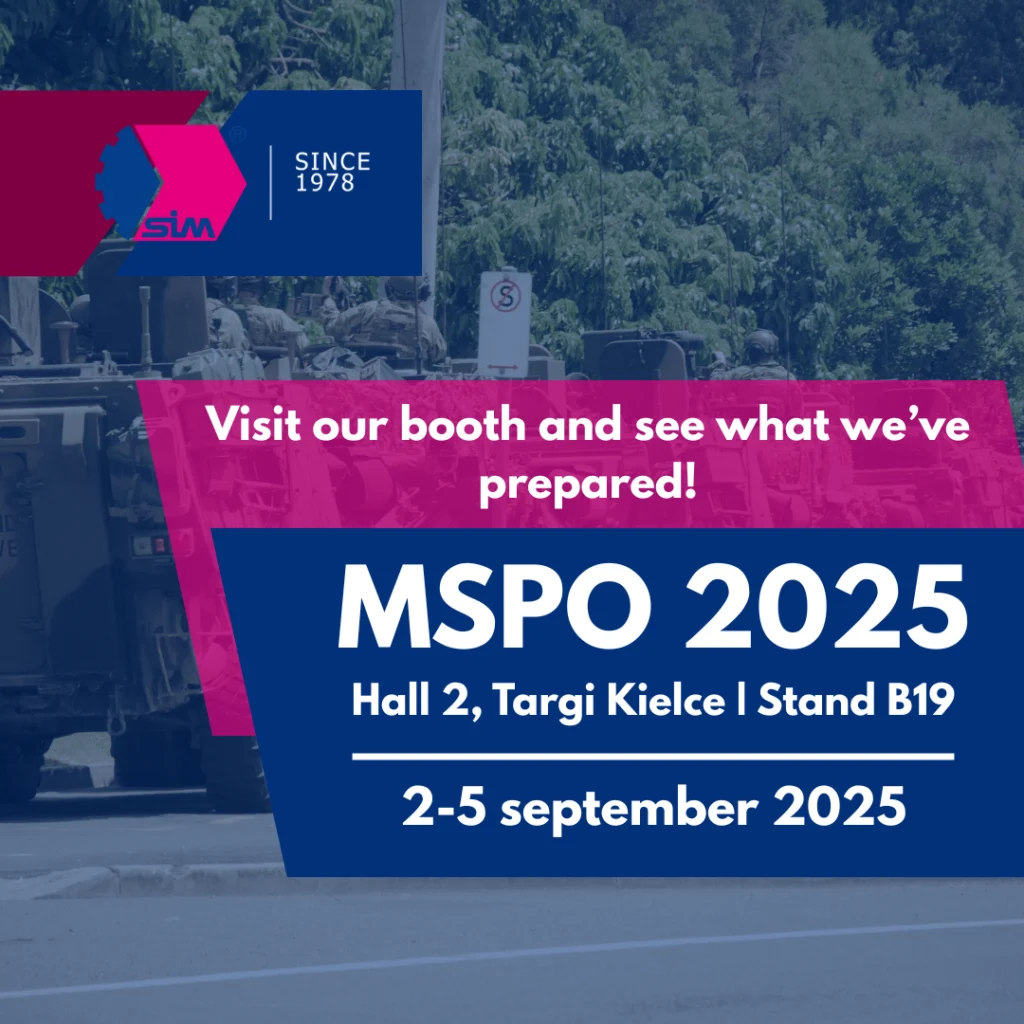
The MSPO Fair is the largest defense industry event in Central and Eastern Europe, bringing together the most important manufacturers, technology suppliers and decision-makers from around the world every year. It is a space where the military meets industry, and innovative technological solutions become the answer to the growing needs of security and modern defense. This year, we will again participate in the International Defense Industry Exhibition as an exhibitor, presenting our latest competencies, CNC machining technologies and new opportunities resulting from the concession we have obtained for projects for the military sector. MSPO – a meeting place for industry, technology and security Organized by Targi Kielce, the event has for more than 30 years played a key role in shaping relations between suppliers of solutions for the military and procurers – both domestic and international. Previous editions have been attended by more than 600 companies from dozens of countries, and the fair halls have been visited by thousands of specialists, engineers, military delegations and government officials. MSPO is not only an exhibition of equipment and technology, but also an opportunity to establish concrete business contacts, talk about projects and present their own capabilities in the context of the real needs of the defense sector. SIM Gdynia – CNC for defense Our presence at MSPO 2025 has a special character. In July of this year, we received an official license to carry out projects for the defense sector, which formally confirms our readiness to produce components that meet the highest requirements in terms of quality, safety and compliance with standards. During the fair, we will present our core competencies in: Precision CNC machining of metal and plastic components, implementation of complex mechanical designs for military applications, working with difficult materials and large-size components, quality control and finishing processes that meet industry standards. Where to find us during MSPO 2025 You are cordially invited to visit our booth: Hall 2, Booth B19 September 2-5, 2025 | Kielce Trade Fair Our team will be available to present SIM Gdynia’s offer and talk about cooperation opportunities in the area of military and defense projects. We invite you to talk about projects with a future SIM Gdynia is a partner for those looking for a proven contractor with experience, flexibility and access to advanced CNC technology. Our participation in MSPO 2025 is not only a presentation of our offer – it is also an open invitation to dialogue, exchange knowledge and plan future-oriented projects. If you are interested in cooperation in the field of precision machining of components for military applications, we encourage you to contact us or meet directly during the fair. See you in Kielce.
SIM Gdynia has obtained a license for the production of weapons and military technology
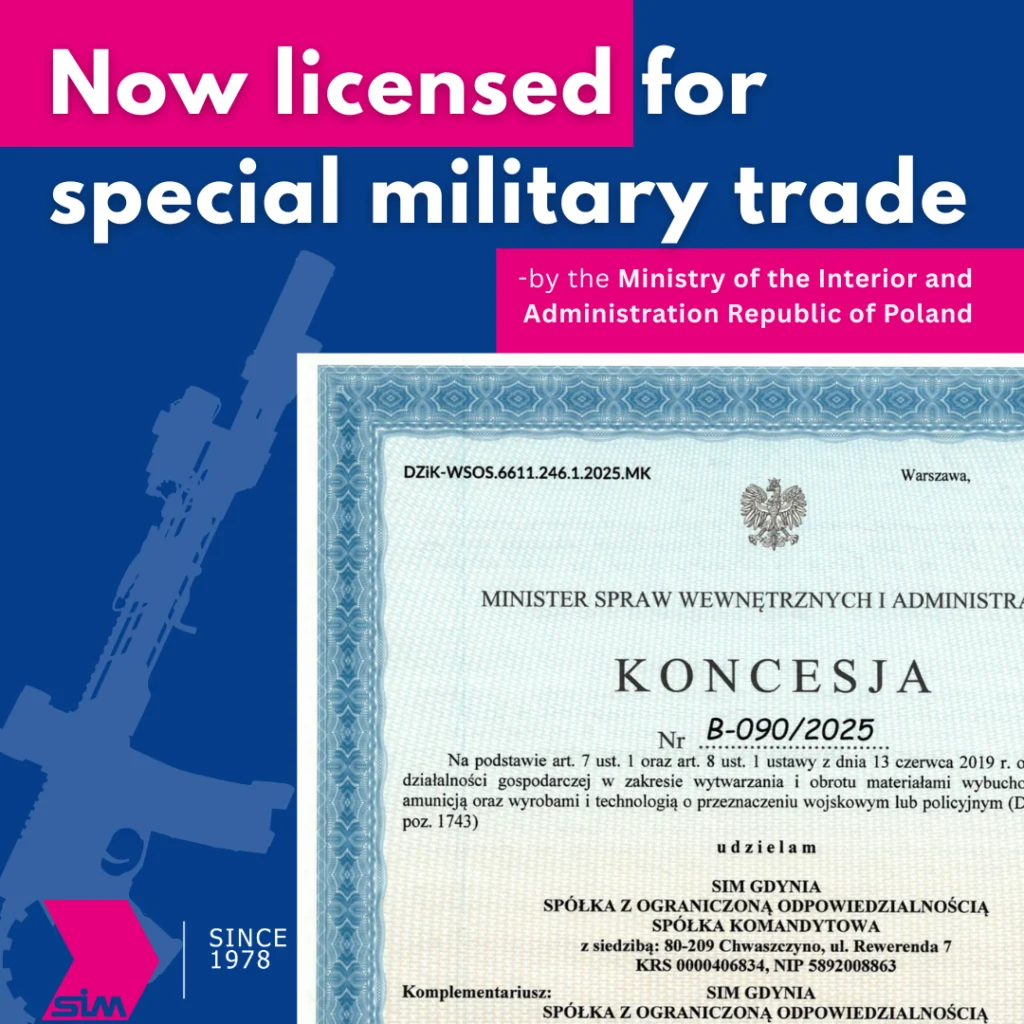
We are proud to announce that on July 4, 2025, SIM Gdynia Sp. z o.o. Sp.k. obtained a license from the Ministry of Internal Affairs and Administration (No. B-090/2025) to conduct business activities in the field of manufacturing and trading in weapons, ammunition, explosives, as well as technologies for military or police use. This is a breakthrough moment in our history, confirming that SIM Gdynia is not only an experienced manufacturer of mechanical components, but also a reliable and fully authorized partner for state institutions and entities operating in the field of security and defense. Confirmation of our competence Obtaining a license from the Ministry of Internal Affairs and Administration is not just a formality – it is the result of a meticulous verification of our processes, resources, and compliance with safety and state supervision regulations. Receiving this document confirms the highest operational standards and full transparency of our activities. For our current and future customers, this is a clear signal: SIM Gdynia is a partner ready to implement projects of strategic importance – from individual components to complex mechanical systems for the defense sector. Ready for new challenges Thanks to our extensive machine park, experience in advanced CNC machining, and our own research and quality control department, we can fulfill orders that require the highest precision, confidentiality, and compliance with restrictive technical standards. We have the technological facilities necessary to produce both short prototype series and full production batches dedicated to military and police applications. We invite you to cooperate with us We are ready to support projects that require special expertise and authorization. If your company is looking for a proven manufacturer of special-purpose components, please contact us. We will be happy to discuss the possibilities of cooperation and tailor our offer to the individual needs of your project.
